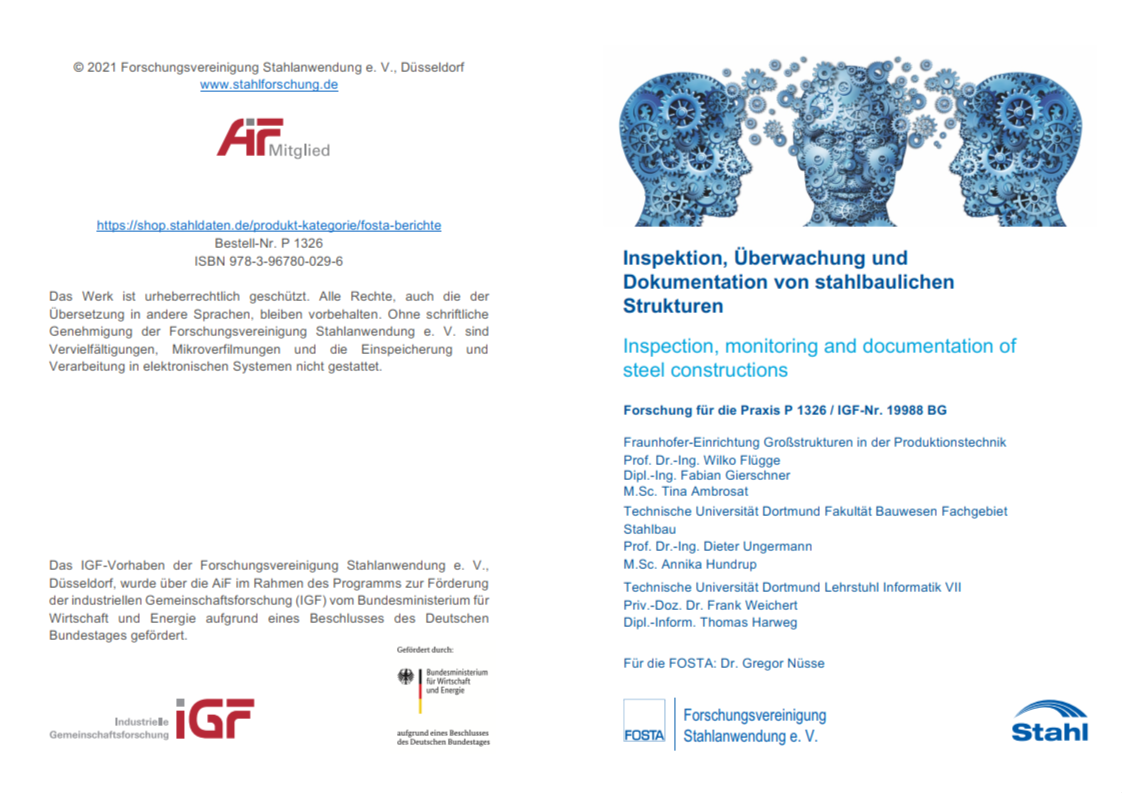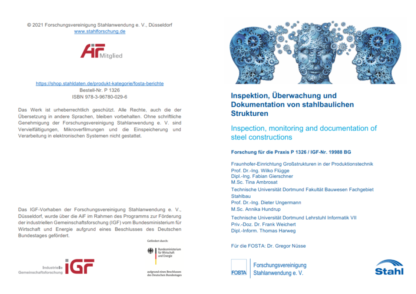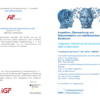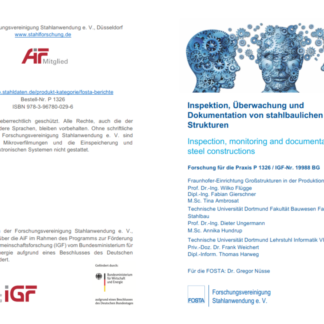Description
P 1326 – Inspection, monitoring and documentation of steel constructions
Infrastructure structures and hall buildings are planned for long-term use and are subject to degradation in the course of their scheduled use. Due to the high and varied stress on these structures, use-related damage is inevitable. If defects and damage are discovered promptly and repaired immediately, the good condition of the structures can be maintained for their entire service life. This is helped by structural inspections at regular intervals, which are usually time-consuming and personnel-intensive and are associated with restrictions on the use of the structure during the inspection.
In the present research project, the idea of an automated condition assessment by flying over structures with unmanned aerial vehicles (UAV) was developed. A subsequent automated 2D/3D image processing and image evaluation up to the supplementation of the digital building file with damage and defect indications as well as instructions for action complete a digitalised and automated building inspection. In the future, this should enable an efficient and closely spaced inspection of structures, which will allow the detection and repair of damage and defects at an early stage.
For this purpose, steel structures (halls and bridges), areas suitable for air traffic and visible damage were examined. This was followed by a damage catalogue as a basis for the inspection of steel structures with evaluations for different characteristics of the damage occurring on steel. From the point of view of automated image data processing, an analysis of the damage description and deviation from the normal condition as well as a definition of this took place. For this purpose, methods were developed for the automated evaluation and classification of damage structures on the basis of image data. Based on this, a procedure for the evaluation of the individual damages as well as the entire structure could be developed. In parallel, the UAV system, a navigation solution based on 3D route planning and a multi-sensor system, was developed. For the implementation of the inspection, the analysis and integration of suitable sensor technology as well as the integration of a safety concept took place. The finally developed procedure for the feedback and representation of the results in a 3D model provides the inspector with a tool for the inspection of steel structures. The above-mentioned research goal was thus achieved.
The economic damage to the Federal Republic of Germany caused by bridges in need of renovation and the associated congestion caused by (partial) closures of traffic routes can thus be reduced. This problem can be counteracted with a bridge inspection using UAVs, as damage can be detected earlier and thus counteracted more quickly (preventive strategy). For the inspection engineers, always represented as SMEs, such a supported inspection process of a bridge or traffic engineering structure would also be simplified and accelerated. The inspection process would no longer take several employees days, and the economic efficiency and productivity of the SME can thus increase. The otherwise necessary use of makeshift equipment such as cherry pickers or bridge soffit equipment is reduced, and so is the hazardous work for the staff. In addition, it is a new product portfolio that the inspection ngineer can offer to the numerous bridge builders. It also addresses the builders of hall structures, where structural inspection is currently not mandatory. Due to a faster and thus cheaper inspection by aerial flight, some hall owners will have their buildings inspected more frequently or at all than is currently the case.
Overall, this procedure contributes to a completely new type of building assessment in the construction industry and links the construction industry with its companies, which primarily operate as SMEs, with the latest technology and Industry 4.0.
Published in:
2021
Authors:
Prof. Dr.-Ing. W. Flügge, Dipl.-Ing. F. Gierschner, M.Sc. T. Ambrosat, M.Sc. A. Hundrup, Priv.-Doz. Dr. F. Weichert




